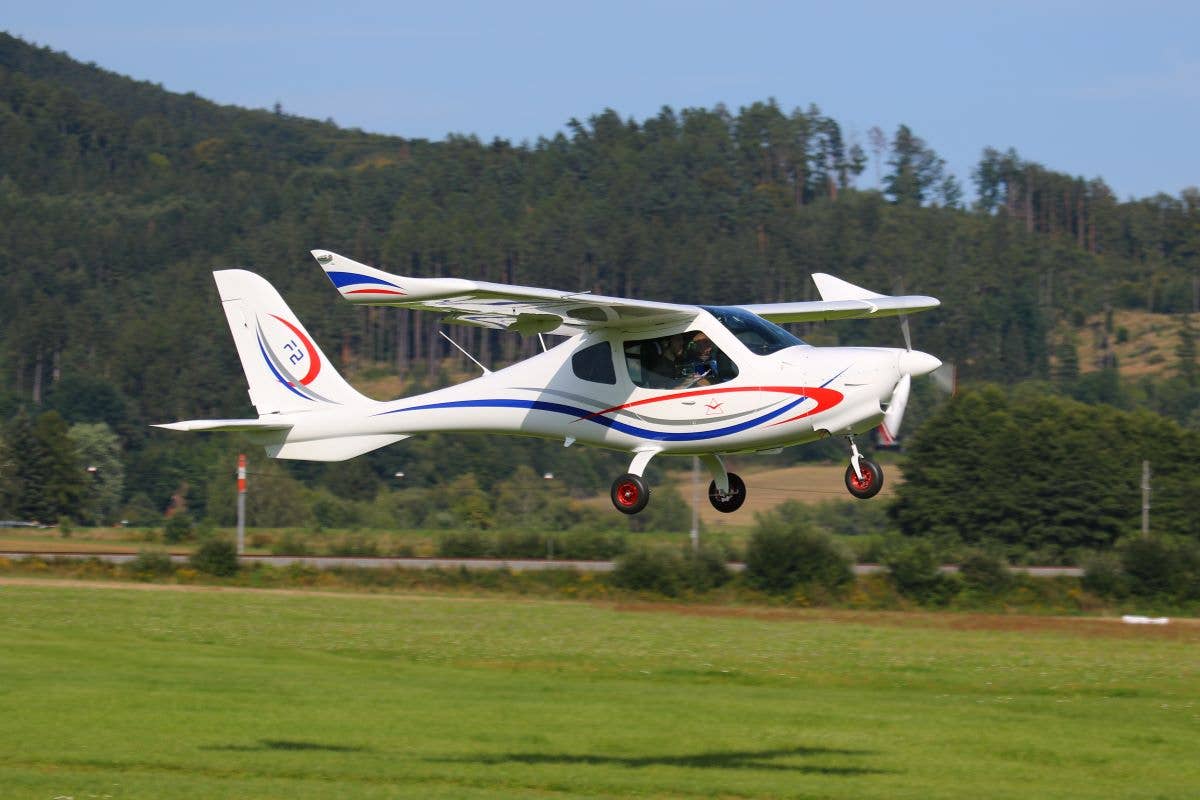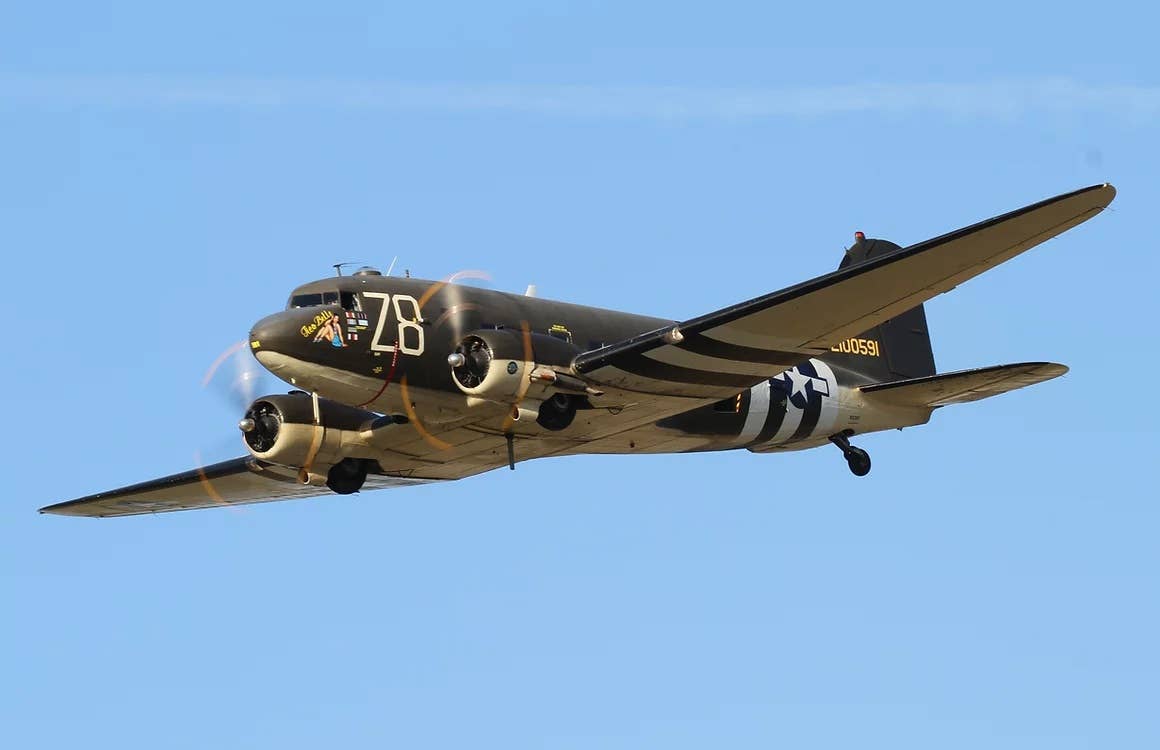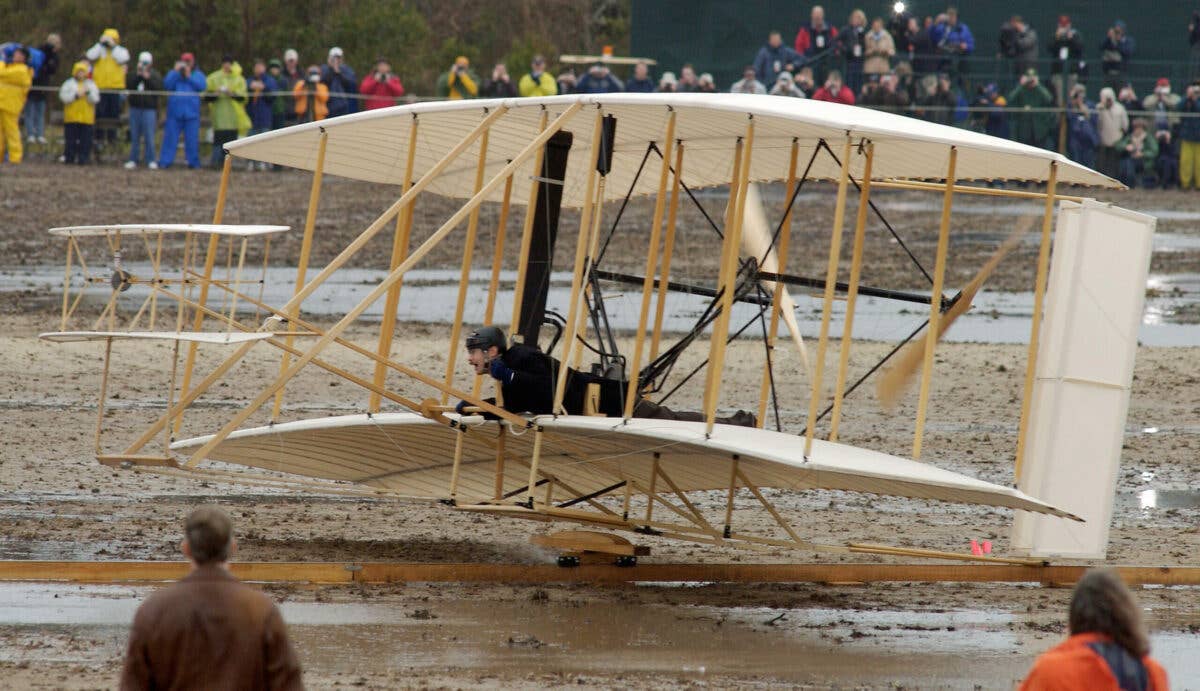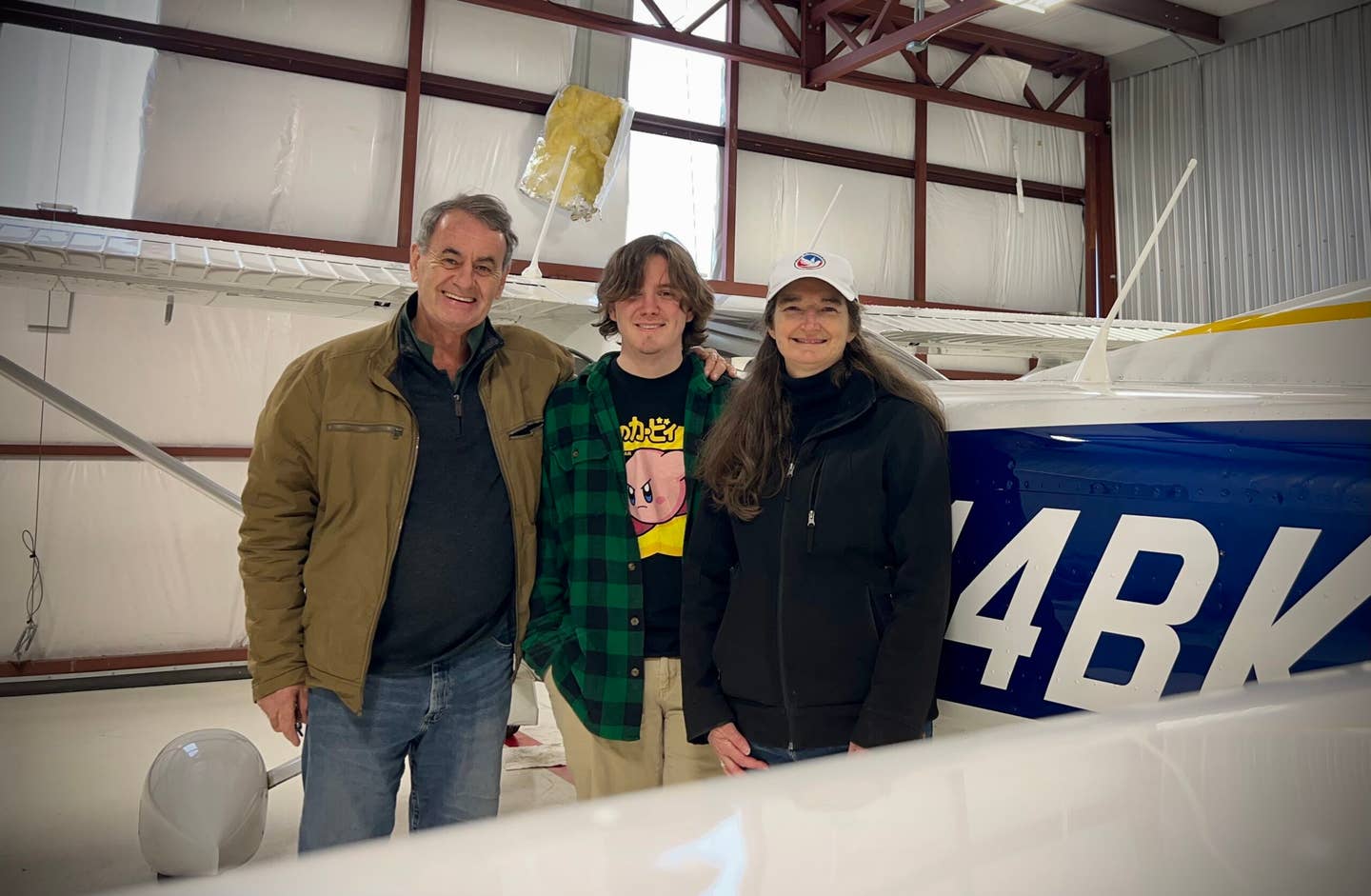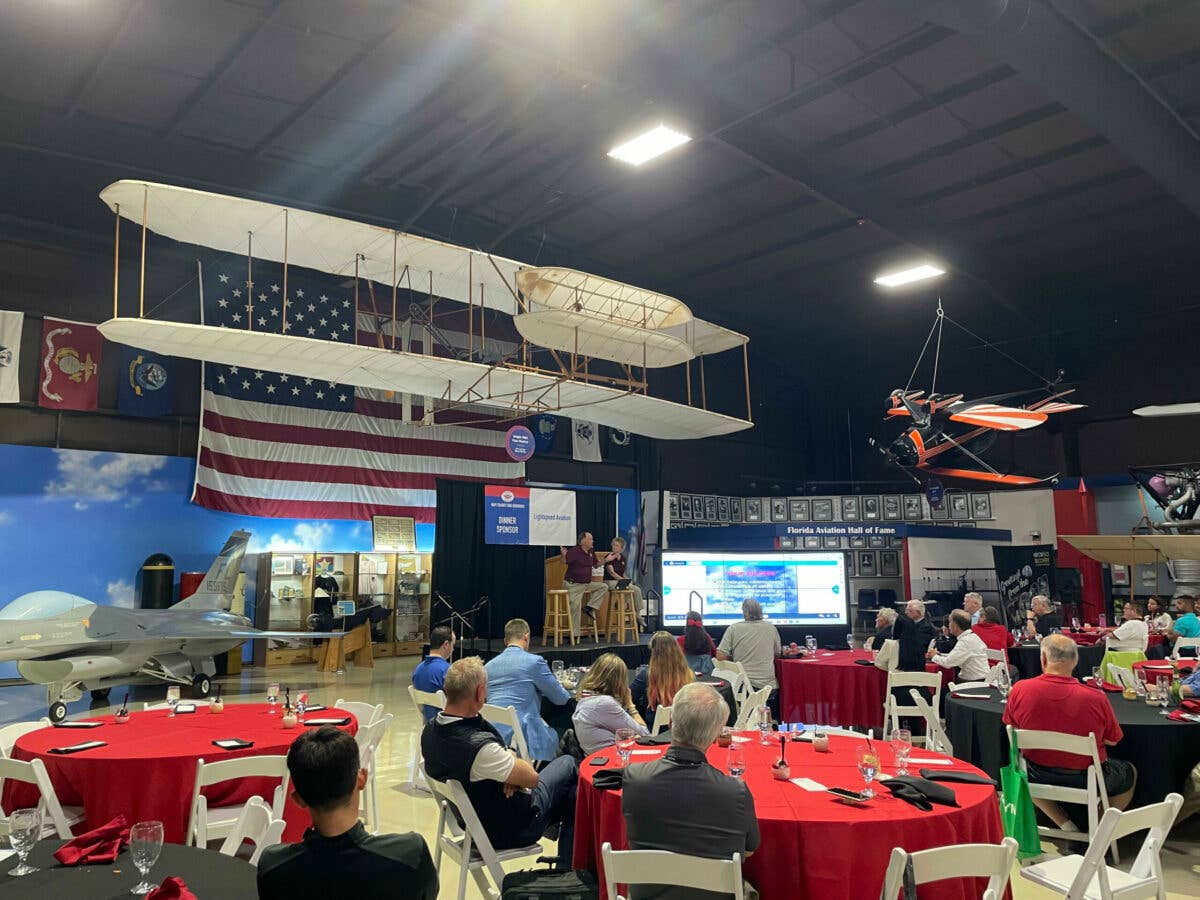Oshkosh Flying Memories
A trio of standout flights to EAA AirVenture show how we remember these moments even when times are rough.
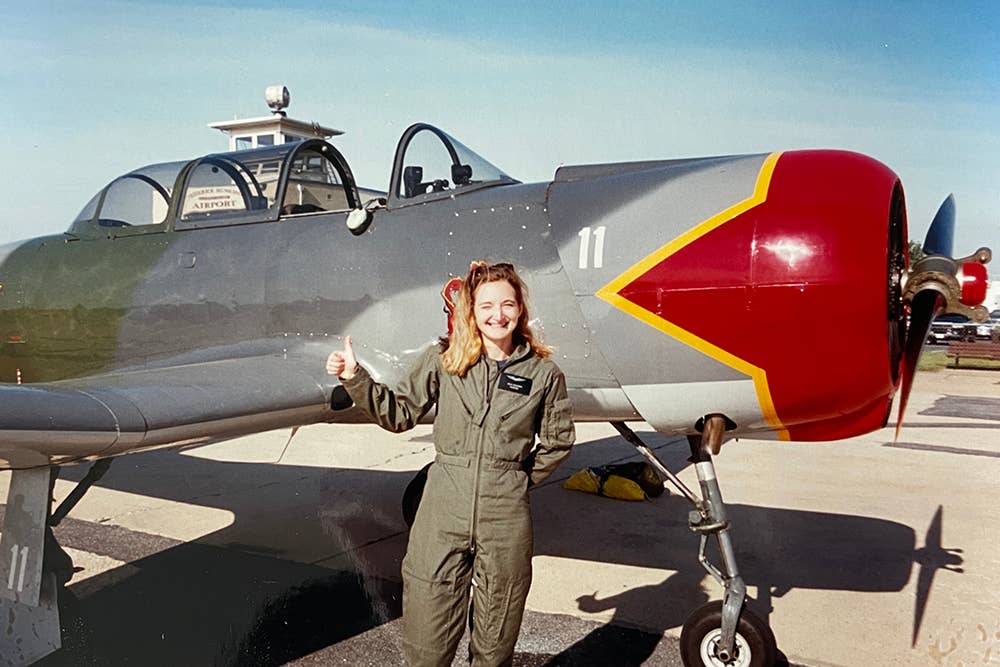
The author in the midst of formation training in front of the Nanchang CJ-6A she flew into AirVenture. [Photo: Julie Boatman]
When you do something new, your brain recalls it with clarity. I think that’s why EAA AirVenture—Oshkosh—has formed a touchstone for my memories of summer for the 25 years I’ve made the pilgrimage.
I’ve read recently about the effect the pandemic has had on our memory, as we’ve gone from a world that moves us around—taking us new places and showing us new faces—to one that stops at the mailbox and inbox. We have trouble encoding memories into our long-term storage—and recalling them with accuracy—when the background remains the same day after day.
If you can’t place where you were on a specific day during the period from March 2020 to November 2021, you are not alone.
But I know where I was on July 20, 2020—and not because a picture popped up on my iPhone. It’s because I had a trip back to the Midwest that took me past the gates at Camp Scholler, and I didn’t see a single RV. Nary a tent. No trams. The gatehouse stood empty. For the first time in my recollection, Oshkosh was just KOSH.
Instead, I met up with Mark Schaible, now owner of Sonex Aircraft, and watched as he signed the deal on his new-to-him ultralight, a CGS Hawk, at a grass strip outside of Omro—and worked to get it started so he could take it aloft. That happens to fit right in with my feeling that my best Oshkosh memories are flying memories.
So, as we look forward to AirVenture 2022, here are a handful of my favorite fly-into-Oshkosh moments.
Nothing Like the First Time, Sort Of
The year was 1996, and after years of reading about the great gathering, I was on my way. I took a pause from instructing that summer, and I finally had both the time and a friend with an airplane who wanted to go, too.
The Cessna T303 Crusader gave us the ability to pick up his cousin and my mother along the way at two iconic airports in Illinois—Poplar Grove (C77; still with us) and Meigs Field (KCGX; tragically not). I’ll never forget flying into Meigs—but that’s another story.
After a weekend up the “thumb” of Wisconsin (Door County), staying at the Bailey’s Harbor Yacht Club, we headed down to the big show. But we’d made a strategic error—we hadn’t considered the idea that Oshkosh would be full. Yes, by Tuesday morning of the show that year (August 1), Wittman Field had closed to additional airplane parking. We settled for landing and camping at Fond du Lac (KFLD), just 13 nm down the road.
While certainly a “port in the storm,” Fond du Lac offered none of the charms of Oshkosh, save the ability to pitch a tent next to the Crusader. Yes, Mom camped too, in the tent she’d used to ride RAGBRAI in years before. She’s a trooper. We rode the bus up to AirVenture, and I carried on indulging in the rapture of my first OSH. But I could have done without the persistent rumble of cars rolling past the airfield fence during those hot nights at KFLD.
The Warbird Arrival
Fast forward five years (and as many trips to AirVenture), and I chalked up another first fly-in experience.
For those who have not yet flown into the event, there are several different ways that Oshkosh air traffic control has sorted out the various types (and speeds) of aircraft that must land at Wittman Field. Most of us fly in VFR, along low-level arrival routes well suited for relatively low-speed piston-powered airplanes.
Others make a reservation for an IFR arrival slot—this is often the way taken by manufacturer’s display aircraft—and those who want to ensure their entry to the airport during the oft-changeable weather found during summertime in Wisconsin.
During VFR weather, turbine aircraft and warbirds alike can use the Turbine/Warbird Arrival, which routes this higher-speed jet, turboprop, or military aircraft (capable of cruising at greater than 130 knots indicated) along a relatively straight shot into the airport. Aircraft report near Fond du Lac, then fly north up the lake, over Warbird Island, and into the runway in use. Overheads permitted—note your direction to break from the NOTAM or as ATC advises.
I had my chance to make my first Warbird Arrival the summer I initially learned to fly formation in a Nanchang CJ-6A. I trained with Mike Filucci and the Red Star Pilots Association (then still the Yak Pilot Association), and we’d just completed a pre-Oshkosh formation clinic at Manitowoc (KMTW), 39 nm to the east on Lake Michigan. I’d let Mike know that I’d never actually landed myself at the big show, so he ensured I would have my big moment at last in the CJ-6, on the Warbird Arrival.
What he didn’t say until we were on short final, mere seconds from touching down on Runway 36? “Smile—you’ve got about a hundred thousand people watching you land.”
Thanks, pal. I would get him back over the years that followed.
Skycatcher Hover-Taxi
Remember that VFR arrival procedure most pilots will take, that I mentioned earlier? I’ve had a couple of great fly-in moments threading the needle to the Fisk waypoint (even before it was in the GPS) and joining the conga line of widely varying airplanes (and pilot capabilities) on the way to a landing on the green dot…or the white dot…or the yellow dot on Runway 9 or 27.
The most memorable of these was on July 24, 2010, when I had the delightful opportunity to bring the brand-new Cessna 162 Skycatcher into the show. I flew in on the Saturday before the show, as the 162 was going on display at Cessna’s exhibit, and we needed all airplanes in place by Sunday. I thought, hey, there won’t be as much traffic coming in on Saturday, right?
Not so fast. I didn’t get to skip the line at all. In fact, when I rocked my wings for the controllers spotting me through the binoculars at Fisk, they just said “high-wing Cessna” not privy to my light-sport-airplane status. No matter, I had no problem keeping up. Or so I thought.
When the tower controller sequenced me onto downwind for 27, north of the airport, he misjudged the Mooney behind me, and asked me for my “best forward speed.” Sure. That’s going to be about 95 knots indicated, not too bad for in the pattern.
When the Mooney kept closing in, he asked me if I could make a tight approach into the numbers from my position not quite 45 degrees past them. Sure. I dumped the flaps and slowed right down and headed for the numbers.
Then he asked if I could change to the green dot, a few hundred feet and change down the runway. I was in the landing configuration, and slowed to about 50 knots, so I leveled off about 5 feet above the runway and powered along until I dropped onto the green dot. The little Catch did exactly what I asked—even if the controller thought I had touched down early. Nope. Right on the dot.
What’s Next?
So, there’s a trio of good memories—and looking ahead to this year’s show, I don’t yet know if I’ll be flying in myself, as my aircraft buying pursuit has been delayed by the market and other forces. But I’ll be dreaming of it, that’s for sure, and hoping you get a chance to make those memories stick, too.

Sign-up for newsletters & special offers!
Get the latest FLYING stories & special offers delivered directly to your inbox

